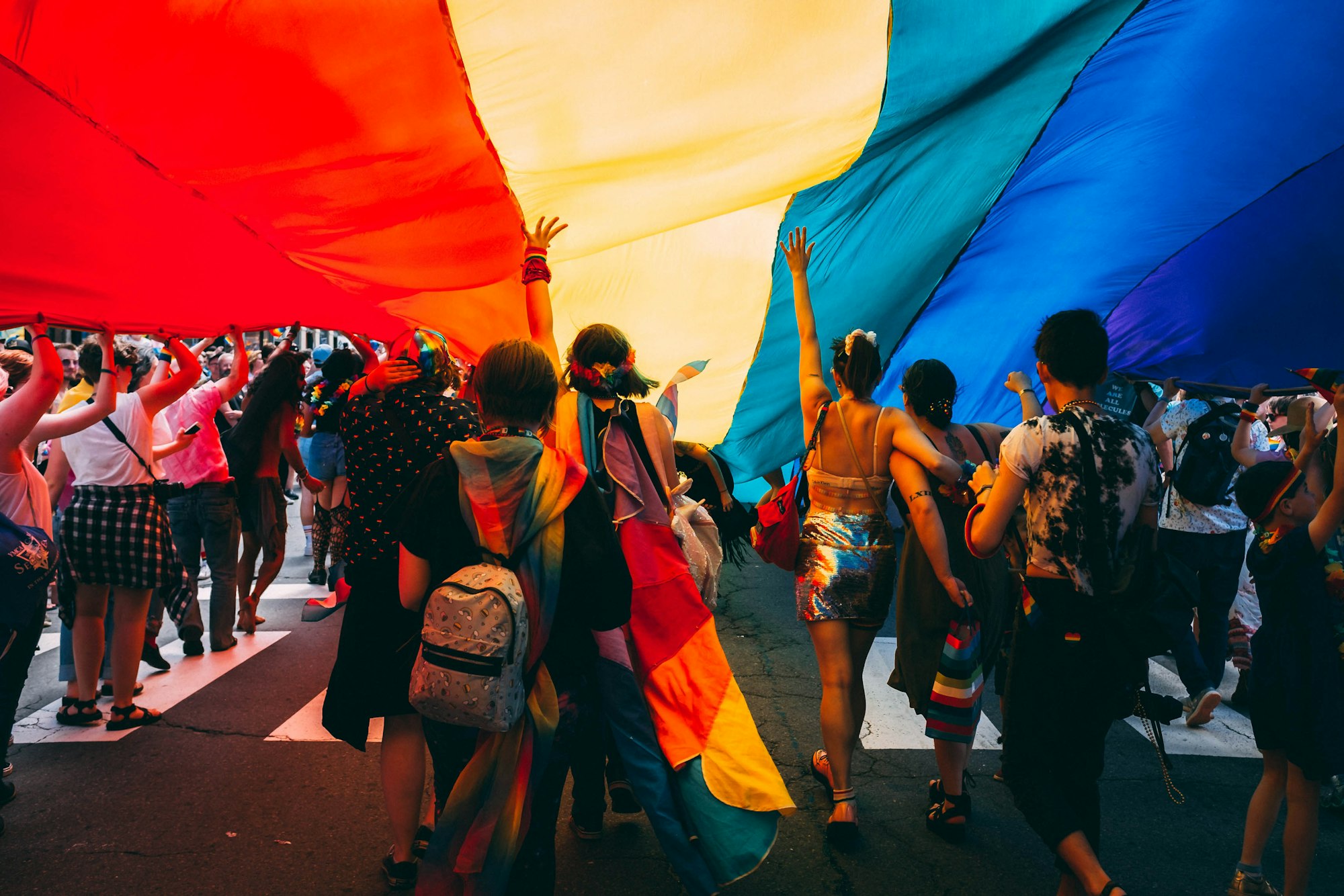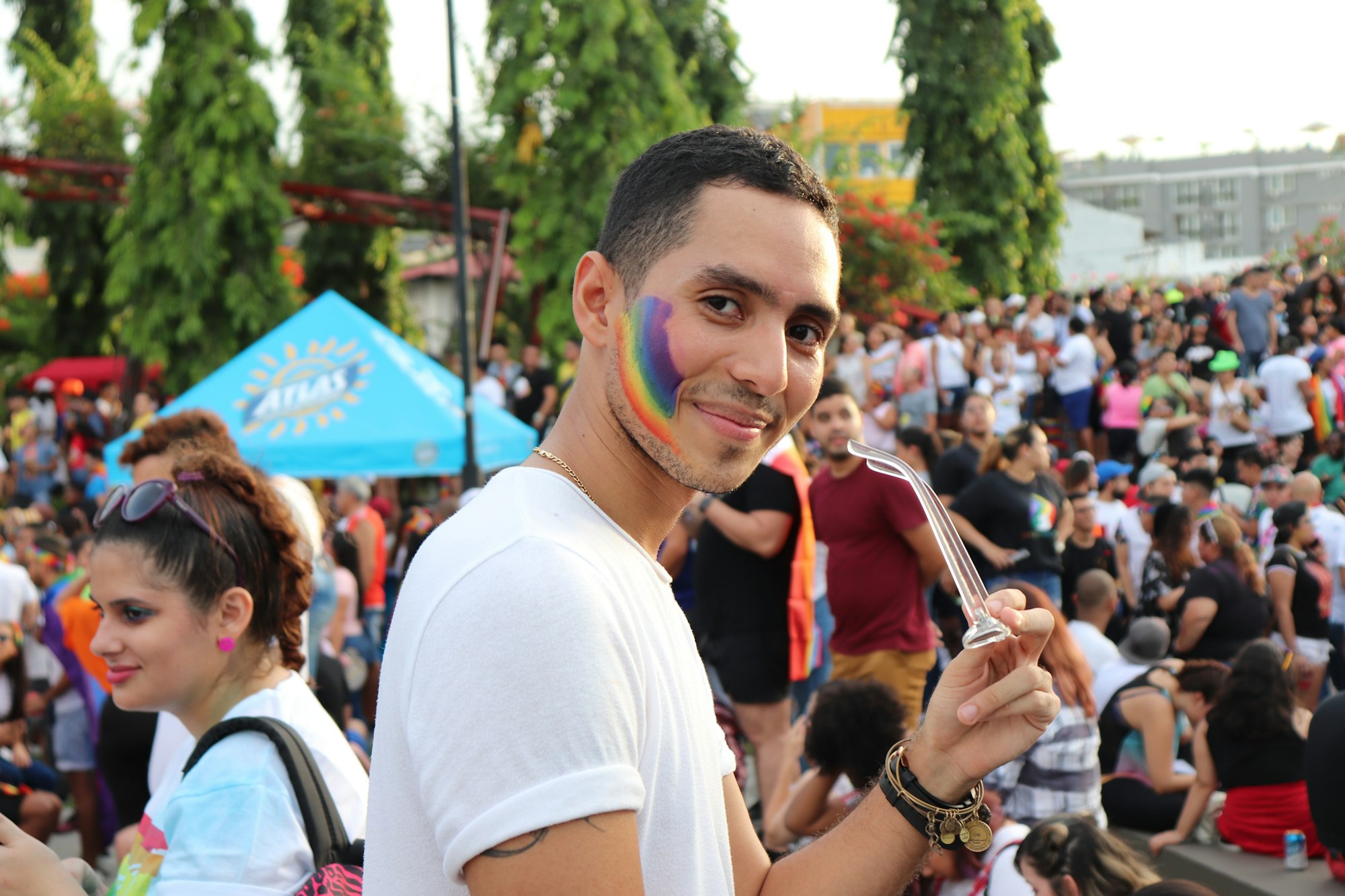Today's ZOX Blog is written by ZOX's very own, Bella Campbell, as she recounts for us the events of the Stonewall Riots that occurred in 1969, catalyzing the events of Pride we know today. Please enjoy! ♥️ -Landri
Pride: Riot Turned Parade

With this year's Pride collection releasing today, we felt it important not only to share what the straps mean to us but also the historical references behind them. Our necklace and our ‘Proud’ bracelet remind us of the Stonewall riots taking place at the Stonewall Inn on Christopher Street in New York City on the night and early morning between June 28th and June 29th, 1969. Gay clubs were a place of refuge in a time when gays could lose their families, jobs, and homes simply for loving who they love and being who they were. It was also a safe haven for LGBTQ+ youth who had been kicked out of their homes and left to the streets. For 1-3 dollars, they could escape the harsh nature of the elements and of society's harsh reticule. Raids at the Stonewall were monthly due to the watered-down alcohol, crossdressing, and blackmail by the Mafia (owners of the bar) as well as same-sex dancing, despite being legalized a year earlier.
There were a few reasons that the raid on the night of The Stonewall Riot went differently than those on nights prior. Firstly, a raid had already taken place on Tuesday, June 24th that angered the patrons. Secondly, three of the other gay bars in town had already been shut down the week of the Stonewall riots. Third, there was a new deputy inspector by the name of Seymour Pines set on cracking down on the illegal activities of gay bars at the time, and he had intended on this particular raid to pack an extra punch.
At 1:20 a.m. on June 29th, 1969, Seymour Pines pounded on the door of the Stonewall Inn shouting, “Police, we’re taking the place.” One other thing thought to have had an impact on the escalation of the events that night was that when the police broke in, they did not chase everybody out, but lined them up single file to check IDs and let them out one by one. The significance of this is that once you were outside, you had no idea what was happening to your friends inside the building so they stayed outside to make sure everyone was okay. Many of the patrons decided to make grand exits by camping it up with quipets and dancing, egging on the crowd. As this night persisted, the crowd outside grew as patrons were let out of the bar and as passersby came to join. As the police became rougher with the patrons, yelling and chanting began to break out. The night reached a point of no return when a lesbian pushed against a police car yelled, “Why don’t you guys do something” and the crowd (now ten times the size) erupted into flames.

The night consisted of chants such as ”gay power” and “Christopher Street belongs to the Queens,” as well as coins and other objects being thrown through the air. Finally, the cops barricaded themselves inside the building, which was the first time a riot (not just a gay one) had bested the cops securing the Stonewall Riots the place in history. Chants and protests continued outside the stone wall for the next five days, ending on July 3rd, 1969 –including yelling and the linking of arms, forming, at times, kicklines to keep the officers away as they chanted songs such as “We are the village girls, we wear our hair in curls.” For the first time ever, thousands of homosexuals had taken to the streets. Before the riots, there were only two main LGBTQ+ organizations, but afterward, organizations like the Pink Panthers, Gay Liberation Front, The Lavender Menice, and the Lesbian Liberation Front started to pop up all around the country.
Before Stonewall, there had already been talk about nominating a holiday but after Stonewall, the talk became action. One month after the happenings of Stonewall, on July 27th, 1969, hundreds of protesters took to Washington Park to commemorate The Stonewall Riots. After this first commemoration, what was then called Gay Liberation Day, and now known as Pride, happened once a year in late June as a reminder of the events that took place on the night of June 28th, 1969.

If you go to a pride today, there are more hugs and smiles than fists and rioting. It has become a celebration and a commemoration to remind us that the fight for gay rights started not so long ago. Our Zox family is so happy to be able to celebrate alongside LGBTQ+ members from around the world, after all, we love a good reminder. So when you wear these straps, remember those who came before you, remember how this came to be, and remember the love and support of all those wearing bracelets like yours.
Sending love,
Isabella Campbell (she/her)
Glossary
Camp, meaning ostentatious, exaggerated, theatrical.
Closeted, meaning to hide your gender or sexuality.
Out, meaning to not hide your gender or sexuality.
Drag, a person who dresses up as an exaggerated version of the opposite gender for a performance.
Crossdressing, Wearing clothes that don’t match one's birth gender, a term used before the word transgender.
Resources
Trevor Project: LGBTQ youth are more than four times as likely to attempt suicide than their peers, The Trevor Project is an American nonprofit focused on the prevention of suicide among LGBTQ+ youth through a toll-free helpline. If you are experiencing thoughts of suicide, please call 800-273-8255.
PFLAG: Parents and Families of Lesbians and Gays is an organization that teaches and provides resources to friends families and allies of LGBTQ+ members.
My Kid is Gay: This is a great resource to find answers to questions that many allies and parents have about being LGBTQ+ and being in the life of someone who is LGBTQ+.
Citations
Stonewall the Riots that Sparked the Gay Revolution by David Carter
Stonewall Riots by History.com
Breaking out in the fight for gay rights Stonewall by Ann Bausum
